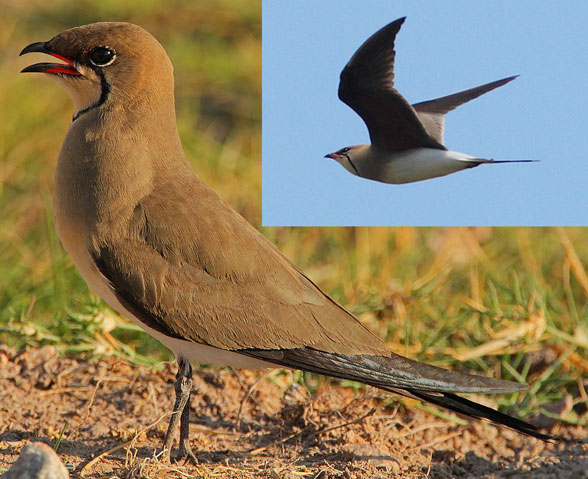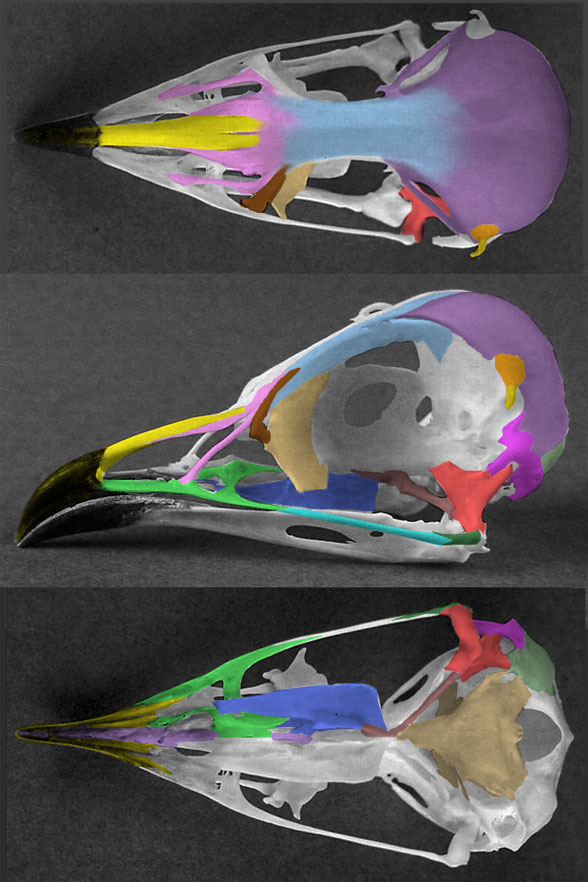According to Wikipedia,
Old World Glareola pratincola (Linneaus 1766, Figs. 1–3) is a member of the wading Charadriiformes. Thus it is supposed to be phylogenetically similar to plovers. Let’s test that.
Wikipedia also reports,
“Pratincoles are unusual among waders in that they typically hunt their insect prey on the wing like swallows, although they can also feed on the ground.”
“Unusual among waders”. That’s a potential clue.
Here,
in the large reptile tree (LRT, 2091 taxa) Glareola nests between Tyto the owl and the owlet, Aegotheles + the nightjar, Lyncornis. Tynskya and the swifts are also related, not with the convergent swallows).
Glareola came to my attention
because the gene study Prum 2015 nested it basal to Uria, the flying bird that also swims with its wings. That’s four nodes apart from the plover, Charadrius in Prum 2015. So no one agrees with one another. Here’s an opportunity for you. Test this taxon and nest it. Let us know what you recover.
This appears to be a novel hypothesis of interrelationships.
If not, please provide a citation so I can promote it here.
References
Linneaus C von 1766. Systema naturæ per regna tria naturæ, secundum classes, ordines, genera, species, cum characteribus, differentiis, synonymis, locis. Tomus I. Editio duodecima, reformata. pp. 1–532. Holmiæ. (Salvius)


